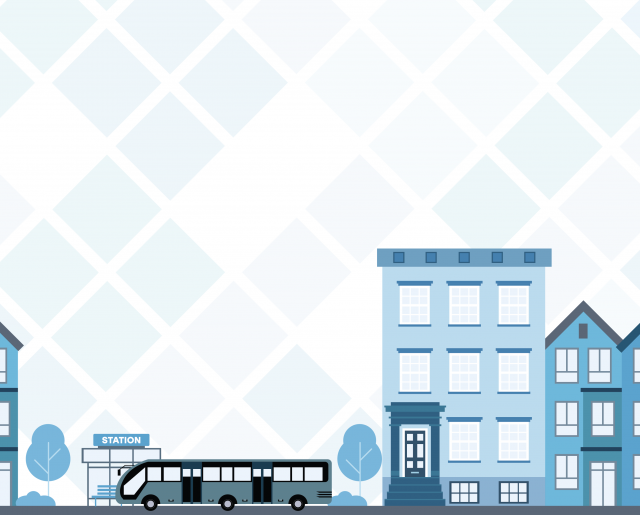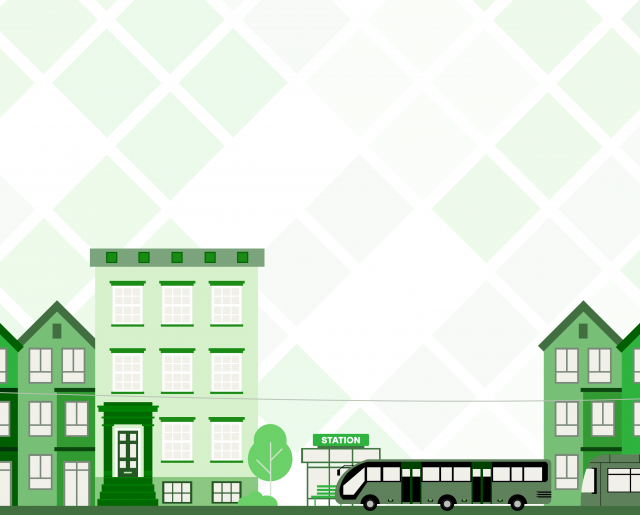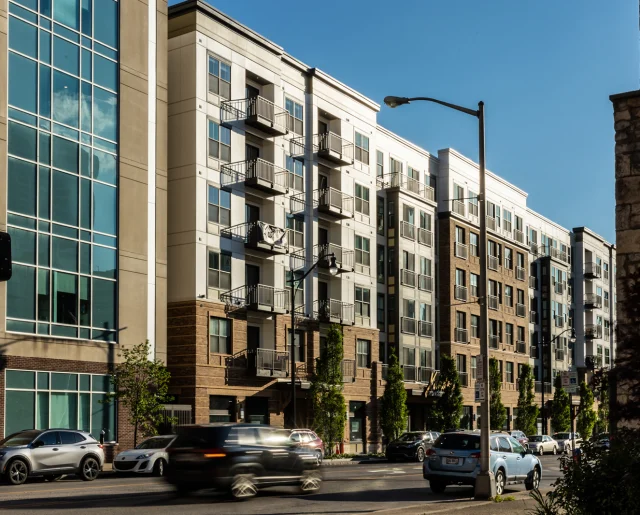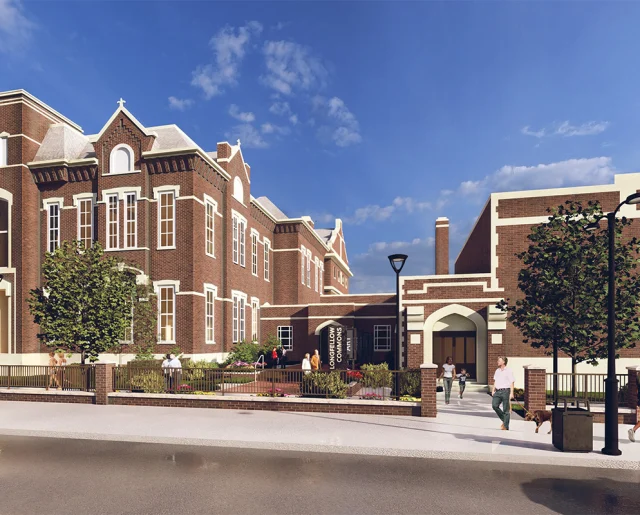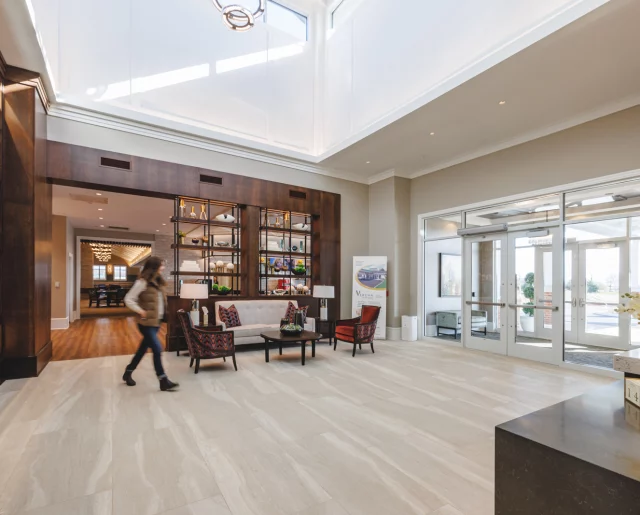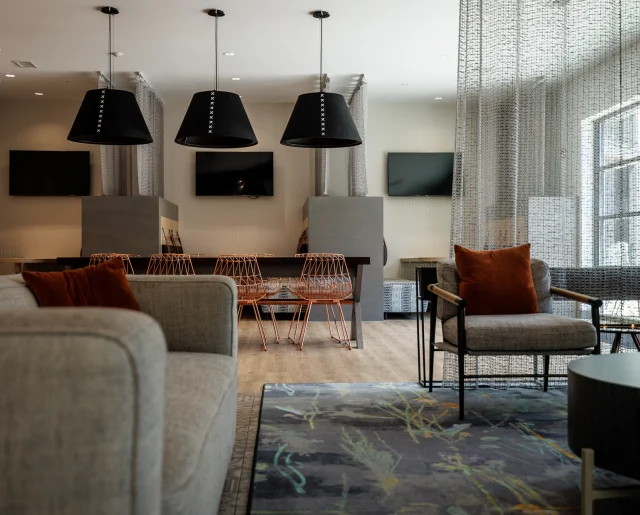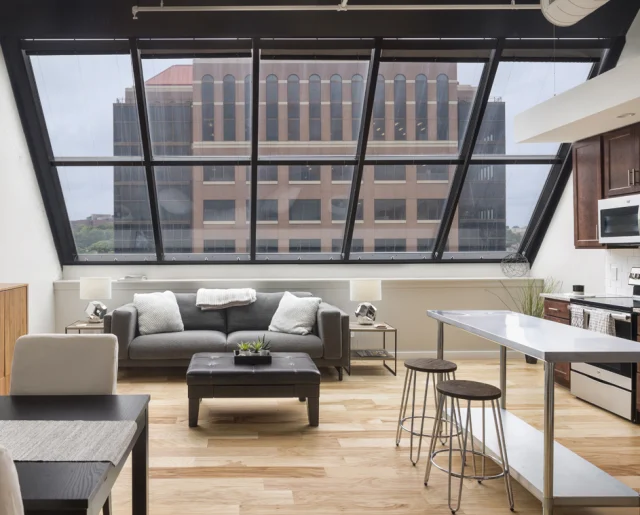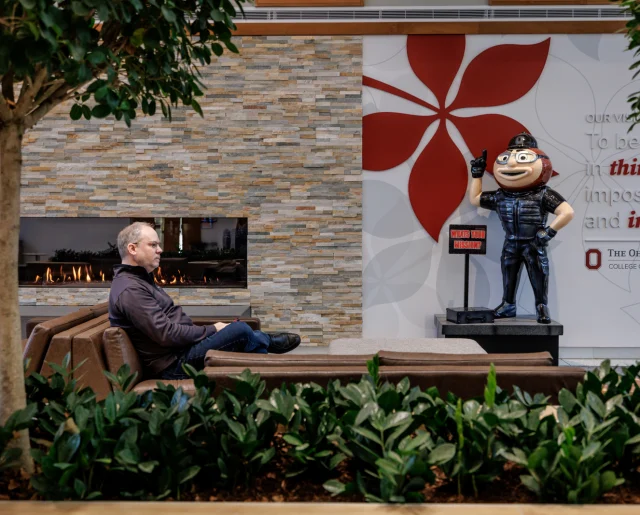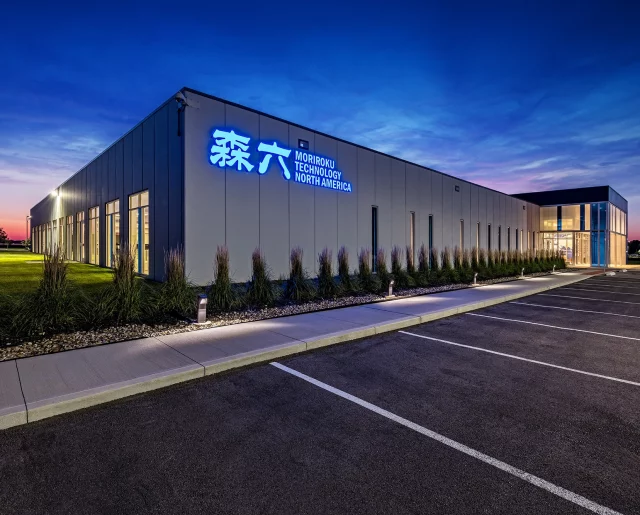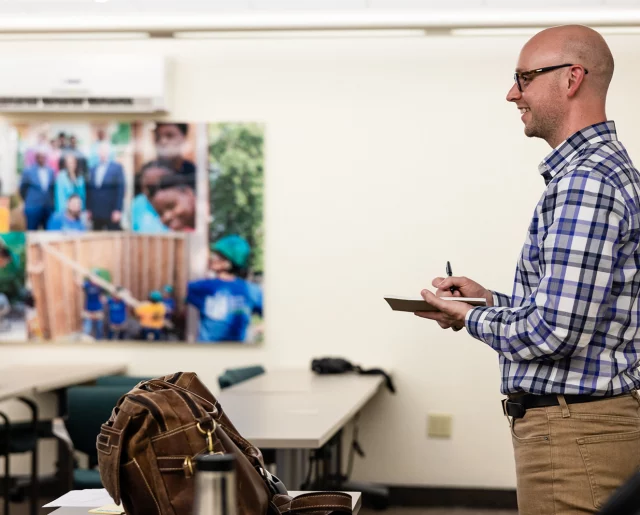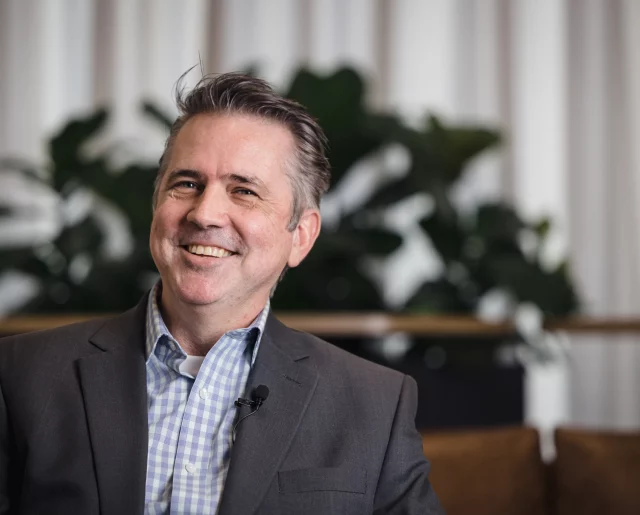60 is the New 30 – Redefining and Redesigning Senior Living: How Boomers Are Changing the World and Raising the Bar
People aged 50+ make up over 50% of the US adult population, and Boomers (born between 1946-1964) are living up to their generational name – and developing housing for Seniors is booming, completely redefining stereotypical “Senior Living” that many associate with end of life care, and bringing a whole new energy, and expectations, to this stage of life worth living.
A 2020 study from Charles Schwab found that Boomer’s lifestyle priorities for their lives, pre-tirement, and once fully retired, are staying fit and healthy (97%), spending time with family (95%) and spending time at home (95%) and it’s more important than ever that their space reflects this time and place in their lives.
With three decades in architecture and design, and nearly fifteen years dedicated to Senior Living, I’ve never seen such a significant shift in the standard of living, and the design expectations for elements and amenities than in the last 3 years – and I’ve never been more energized to be a part of this opportunity to redefine, and redesign, “Senior” Living – like our newest announced project, “Friendship Village” in the heart of the ultimate urban place to be, Bridge Park in Dublin, Ohio.
In our youth, being a “senior” was considered the highest place on the totem pole, but seemingly has taken on a negative connotation as a life stage – until now. Seniors are on top of the world, and 60 IS the new 30. Check out everything you need to know about what’s happening now, what’s coming next, and the ways architecture and design are here to make golden years shine.
Location, location, location – by the time “pre-tirement” is here, they’ve earned it.
Boomers are redefining Senior Living, no longer the traditional end-of-life living, but instead urban environments that make them feel alive. With 10,000 people turning 65 in the US every day, this group is ready to enjoy many more years of good health ahead, and want to be in the heart of it all, looking for urban environments connected within cities. This greying workforce is entering “pre-tirement”, and with Boomers working later, and longer, than any generation before, they have excess capital to afford luxury living.
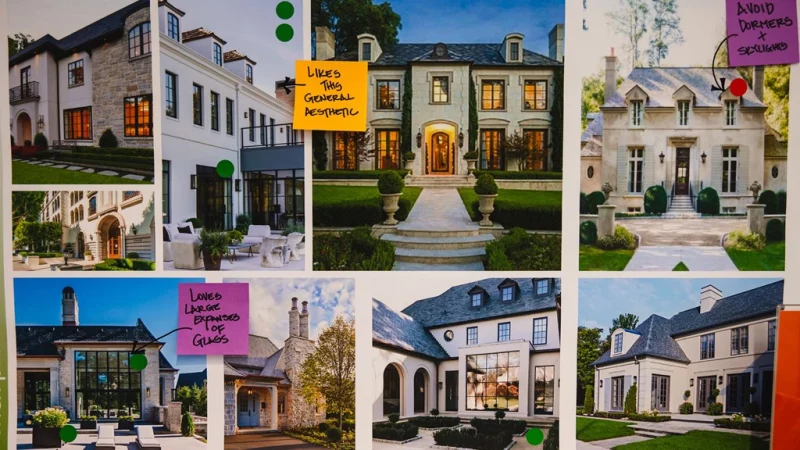
In 8.5 years every boomer will be over 65, and a bulk majority of this generation will still be working. Unlike ever before, a place within the space to work remotely will be a “must-have” for most, and a “nice-to-have” for all.
COVID served as the catalyst for change, driving the necessity for connection and community, with the pent-up drive to socialize, a trend that will drive design and development decisions for at least the next 3-5 years. Design will capitalize on this opportunity by ditching old school amenities traditionally associated with Senior Living environments, like hair salons and diners on-site, and shift focus to larger spaces in more urban places. Boomers are more interested in mixed-use developments and intergenerational living, willing to access amenities available in their neighborhoods and prioritizing more luxurious living spaces at home.
Boomers aren’t slowing down – they’re looking for a place that reflects how they feel – a place where the life inside of them surrounds them.
“Baby Chasing” – a different take on staying active.
“Baby Chasing” is a term you are going to hear more about, and see reflected in design, with Boomers embracing flexibility with apartment rental that grants them the opportunity to follow their kids – and grandkids – wherever they might go, as opposed to being “stuck” in one place.
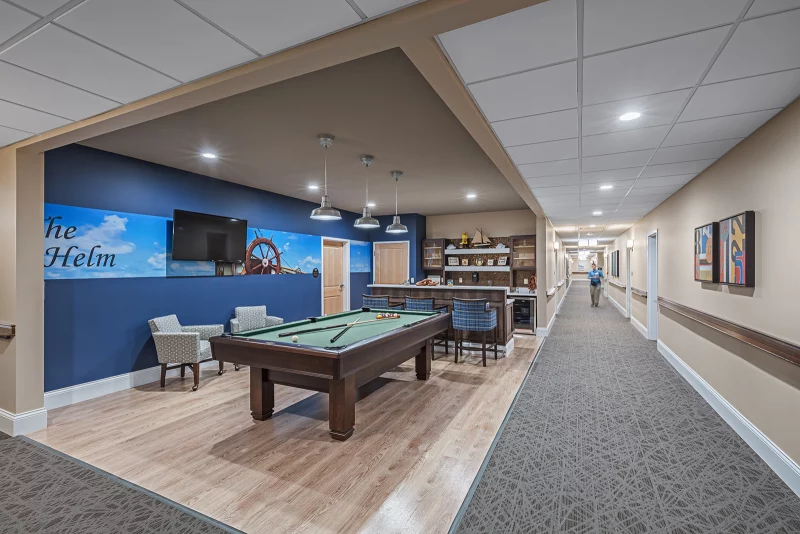
The idea of being closer to family proves their priorities, and shows up in design requirements for spaces, in big ways – like location – and fine details – like, believe it or not, the bathroom.
Our Innovation + Research ethnographic research and demographic surveying has proven that bathtubs are a nice-to-have, but not a priority, particularly for the primary bathroom – and whirlpool tubs are still yet to trend cycle. Instead, second bathrooms are of higher interest, with a demand for traditional bathtubs in there, to allow access for bathing grandkids.
Seniors are Leveling Up, Not Lowering Their Standards.
Boomers are coming from higher-end homes, and need the same luxury features – well-appointed luxury kitchens, spa-like bathrooms – qualified by features such as European showers, higher-end fixtures, larger floor plans, heated floors and towel bars – and high access to maintenance. Unlike other generations, they have the capital to fund larger layouts for their apartment units, and with that investment, want to ditch responsibilities for maintenance, like landscaping and home repair.
This group would rather spend their money paying for a bigger unit with more practical design aspects, like storage closets and bedrooms, versus “trendy” design aspects, like a vaulted ceiling with a loft.
Kitchen preferences are one of the biggest priorities, with the highest standards – a place where Boomers value the traditional dining room, requiring at minimum six spaces to share dinner with their children – and grandchildren. This generation would forgo an island entirely to prioritize a place for their china cabinets – a collection that still holds value and is an element to make their rented “house” a home. Boomers are looking for more storage in kitchen cabinetry as well, to house everything they need to host and the collection of kitchen gear they’ve collected, and grown to appreciate, over the years.
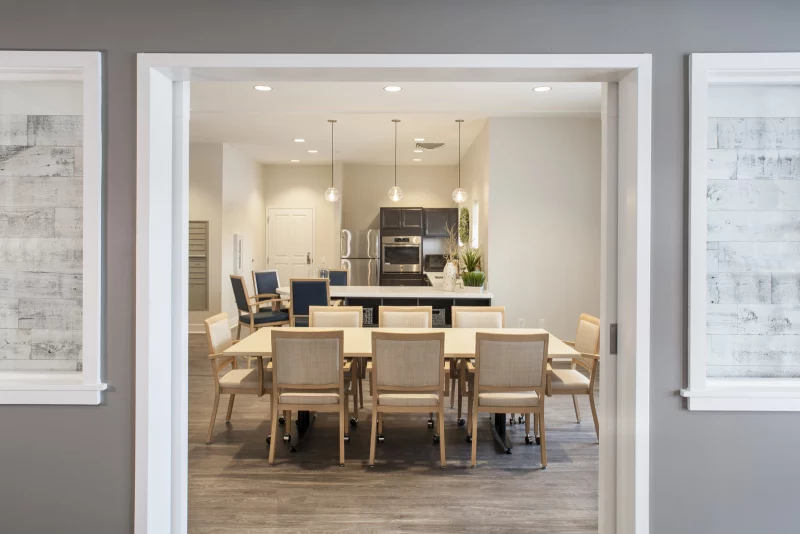
Intimate outdoor spaces, that serve as a place for socialization, are huge drivers of rentals for Boomers – a place they can host family and friends outdoors over drinks and food.
How to Go With the Flow: Storage: The Premium Priority + Floor Plan
Storage is a premium priority, and most ideally within the unit. This design aspect carries significant sentimental value, a key behavioral psychology driver that knows no limit on price. The accumulation of family mementos and nostalgic pieces of reminders of the past take precedence, and units with space – like walk-in closets, bedrooms with cedar chests, and on-site storage units – are worthy of a premium rental fee.
The floor plan has never mattered more than it does to the Boomer generation, with very specific preferences like the ability to walk right into their units – with instant points deducted for elevators, or worse, stairs. When walking in, Boomers want a foyer – and while it doesn’t need to be big, it needs to feel like a zone. It’s important to Boomers that they don’t walk straight into a kitchen, but instead, have flow to move within the space.
We’ll Let You In On a Secret
The secrecy in subtly is the most important art, and key to successful developments, for design to focus on, finding ways to make aging in place possible without any attention. Navigating the psychological ego that comes naturally with this transition, and resistance of getting old, is how developers can charge a premium price for necessary elements that will allow Boomers to stay in units for the long haul. Experts will know this as barrier-free, universal design, with safety elements that don’t look institutional – like a grab bar in a bathroom that blends right in, looking like a high-end fixture, unnoticed. All of MA’s Senior projects are strategically designed to be wheelchair friendly and ADA accessible – including corridors, doors, cabinets – but that feature remains hidden, to negate notions of resistance to “Senior Living”, and instead, present the unit as “spacious” and “luxury living”.
Aging in place is a huge consideration for the longevity of renters, and lower turnover rates, considering accommodations like single-level living and covered parking – less obvious design aspects that while seemingly basic, are imperative for a lifetime renter.
With a career spent designing and researching Senior Living and the built environment, I have never been more confident in our capabilities to redefine expectations and reimagine possibilities for this generation changing what “normal” is, creating spaces rooted in comfort, energy and dignity – while incorporating specific, functional design purposes. Email me at russg@designwithma.com if you are interested in continuing the conversation, or exploring ways that together we can abandon convention, challenging standards to create spaces that add life to people’s days.

